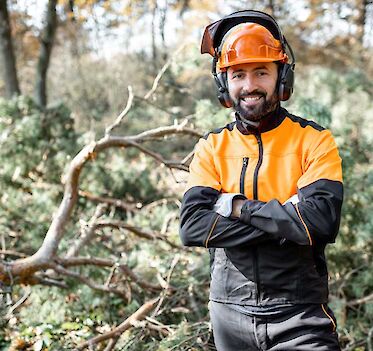Essential Strategies for HR Directors and Safety Managers to Protect Outdoor Workers from Poisonous Plants
Welcome to our comprehensive guide on keeping your outdoor working employees safe from poison ivy and poison oak. This guide will help you effectively navigate outdoor work environments and keep employees safe from harmful plants.
Understanding the Risks
What Are Poison Ivy and Poison Oak?
According to the CDC, an estimated 85% of the population is prone to developing allergies to poison ivy, poison oak, and poison sumac. Poison ivy and poison oak contain an oily resin called urushiol, which can cause an allergic reaction resulting in a painful rash. These plants are commonly found in wooded areas, fields, and near clearings, making them a significant hazard for outdoor workers.
Prevention Tips
Educate Your Team
The first step in prevention is awareness. Make sure your team can identify poison ivy and poison oak:
- Poison Ivy typically has clusters of three pointed leaves with smooth or slightly serrated edges.
- Poison Oak has leaves that resemble those of an oak tree, also in clusters of three, but with a more rounded appearance.
Next, it is important to provide workers with the proper PPE and tools needed to protect them when working in areas where poisonous plants are present. The PPE and tools might consist of:
- Long sleeves, pants, gloves, and boots to reduce skin exposure
- Gloves and eye protection
- Respirators (in some cases of burning plant material)
Use Barrier Creams
Barrier creams containing Bentoquatam can be applied to the skin to block urushiol absorption. Remind employees to reapply as directed, especially if they are sweating or exposed to water.
Implement Safe Work Practices
- Designate specific areas for breaks and ensure these areas are free from poison ivy and poison oak.
- Instruct workers to avoid touching their faces, especially their eyes and mouth, while working.
- Provide tools and equipment for removing these plants safely if they are found in work areas.
- Provide soap and water at the worksite so employees can clean areas that might have come in contact with the poisonous plants.
Treatment Steps
Immediate Actions
If an employee comes into contact with poison ivy or poison oak:
- Wash the Area Immediately with soap and cold water. This can help remove some of the urushiols and reduce the severity of the reaction.
- Clean Tools and Clothing to prevent further spread. Urushiol can linger on surfaces and cause reactions later.
Treating the Rash
- Topical Treatments:
- Apply calamine lotion or hydrocortisone cream to soothe the itch and reduce inflammation.
- Use cool compresses to alleviate discomfort.
- Oral Medications:
- Antihistamines like Benadryl can help reduce itching and allergic responses.
- Over-the-counter pain relievers like ibuprofen or acetaminophen can manage pain.
- Seek Medical Attention:
- If the rash is widespread on the face or genitals or shows signs of infection (such as pus or increased redness), seek professional medical care immediately.
Monitor and Follow-Up
Ensure that any affected employees report their condition regularly. Follow up with them to ensure the rash is healing properly and that they have access to necessary medical care.
Creating a Culture of Safety
Regular Training
Make safety training a regular part of your schedule. Reinforce the importance of recognizing and avoiding poison ivy and poison oak, and keep all employees updated on the best practices for prevention and treatment.
Encourage Reporting
Create an environment where employees feel comfortable reporting encounters with these plants and any symptoms of rash or irritation. Early reporting can help manage the problem before it affects more staff.
Partner with HealthCARE Express
At HealthCARE Express, we pride ourselves on having an Occupational Medicine Department that works as hard as you do. We can aid you in building a corporate wellness program that educates employees on staying safe on the job site. With 16 locations and extended hours for your convenience, our Worker's Compensation Department can also help treat any employees who might come in contact with poisonous plants or experience any other injuries while on the job.
Conclusion
By taking proactive steps to educate and protect your employees, you can significantly reduce the risks associated with poison ivy and poison oak. Remember, an informed and prepared team is a safe and productive team.
For personalized advice or to schedule a safety training session, don’t hesitate to contact our experts. Let's work together to create a safer working environment for everyone.
Stay safe and happy working!
